Speaker
Description
Quantum computers we can use today are not quantum error corrected. This leads to noise in their calculations, which is why it is necessary to better understand how a certain level of noise affects application results. In addition, many different technologies have been developed for quantum computing units (QPU), e.g. with superconducting qubits, photons or ion traps, which have certain advantages and disadvantages in their computational quality. However, this quality is assessed using hardware parameters such as relaxation times T1/T2 or hardware-related benchmarks such as quantum volume (QV) or CLOPS. Even though these quality characteristics are very important parameters for assessing the general usability of quantum computers, their properties make it difficult to make statements about how strongly these hardware-related metrics affect application results. This makes it difficult for application specialists such as chemists, data scientists or logisticians to determine how well certain problems can be tackled on which QPU technologies with which quantum algorithms.
As a first approach, we analyze the sensitivity to different noise channels of a quantum machine learning method using quantum kernel estimation algorithm (QKE) in a standardized classification procedure with support vector method (SVM). qSVM has a hybrid setup and needs to run over the entire classic-quantum workflow, with the most time-consuming part running on quantum. It can be easily tuned to investigate scale (number of qubits), quality (depths of circuit) and speed (execution of layers per circuit) in context of the accuracy of a trained model. The in ML widely used MNIST dataset delivers high accuracy results without relying on the quality of data engineering.
We show the results of series of emulations on a pre-version of ParTec’s quantum workbench varying number of qubits, data samples sizes, quantum feature maps and circuit depths. Our baseline work shows results without noise on a fake target device. Under same conditions different kind of noise channels have been applied to analysis its impact on the accuracy of the ML model.
Email Address of submitter
stefan.kister@par-tec.com
